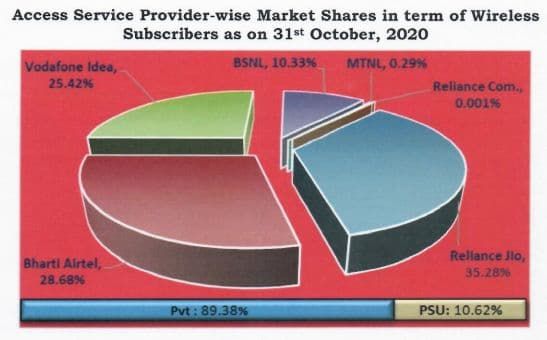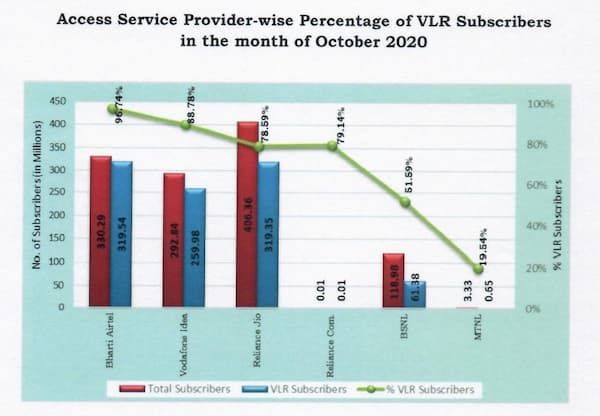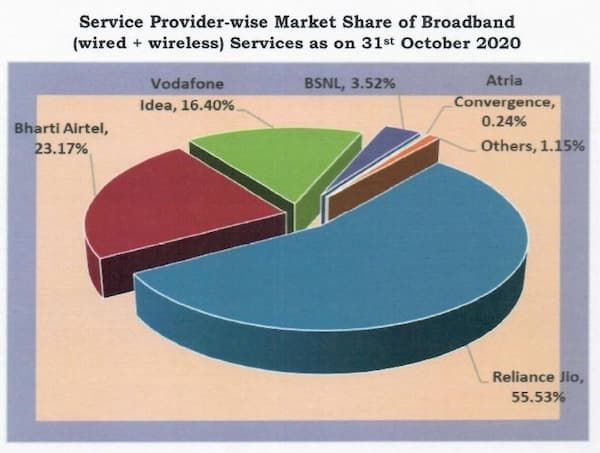Jio’s 21.4% Users are Inactive (Airtel Adds 3.7M Wireless Users)
-

As per the latest reports from TRAI, Bharti Airtel leads for the 3rd straight month in terms of subscriber addition. Airtel has added 3.7 million wireless subscribers as against to Jio’s addition of 2.2 million.
The Telecom Regulatory Authority of India (TRAI) has released its October 2020 report. The report says that Airtel grew by 1.12% whereas Jio is up by 0.55% and Vi down by another 0.9% when compared to previous month’s data.
Airtel Leads for 3rd Straight Month:
In terms of subscribers, the Airtel added 3.67 million, Jio added 2.2 million, and Vi combine lost 2.65 million wireless subscribers in October 2020. Shockingly, the state-run telecom player BSNL has also lost 10,208 subscribers from its kitty.
When the over-all subscription base is considered, Jio leads the market with 406.36 million, followed by Airtel’s 330.29 million and Vi’s 292.84 million.
21.41% Users of Reliance Jio are Inactive:
However, the pan-India 4G VoLTE operator Reliance Jio also has a great proportion of inactive users. The inactive subscribers of Jio, Airtel and Vi stand at 21.41%, 3.26% and 11.22%.
Out of the total 1151.81 million subscribers, only 960.91 million subscribers are active users. The analysis on active wireless subscribers reveals a piece of shocking news to Reliance Jio. Only 78.59% of Jio’s subscribers are active users. Whereas the scenario is bright for Bharti Airtel with about 96.74% active users.

The wireline subscriber’s data is a bit encouraging for Reliance Jio. It has gained 245,912 connections when compared to Airtel’s 48,397. The broadband market share (both wireline and wireless) is dominated by Jio (55.53%), Airtel (23.17%), Vodafone (16.4%), and BSNL (3.52%).
Still, BSNL is the market leader in terms of wired broadband connection. It has 7.75 million subscribers, followed by Airtel’s (2.67 million), Atria Convergence Technologies (1.74 million), Reliance Jio (1.7 million) and Hathway Cable (1.05 million).

The TRAI October 2020 also revealed that 8 states have less teledensity than national average 86.38% teledensity. Bihar registers the lowest teledensity of 52.60% and Delhi has the maximum teledensity of 273.94%
Though the Indian government is taking concrete steps in the development of the telecom sector, a lot has to be done with respect to the states like Bihar, Uttar Pradesh, Madhya Pradesh, and North East.
Do you agree with my opinion? Share your thoughts.
You May Also Like: Bharti Airtel Adds 3.8M Subscribers (Still Jio Holds No 1 Position)